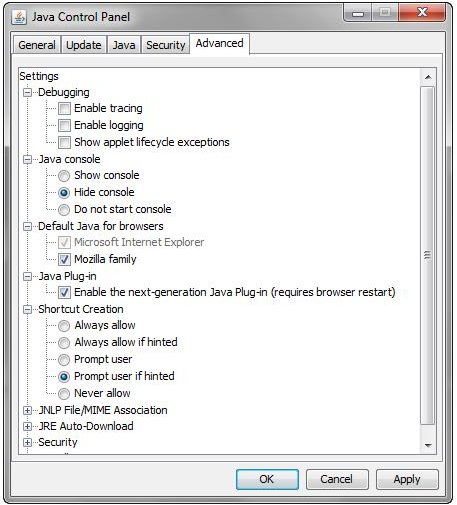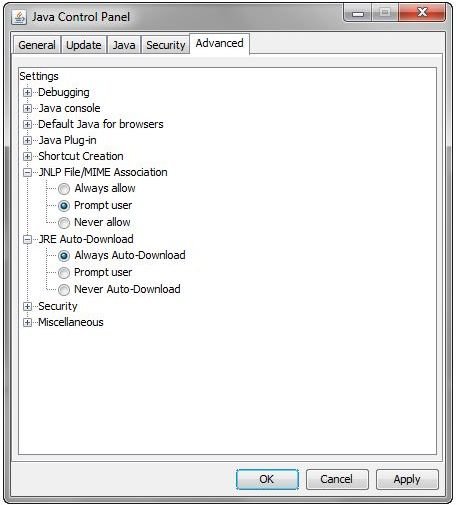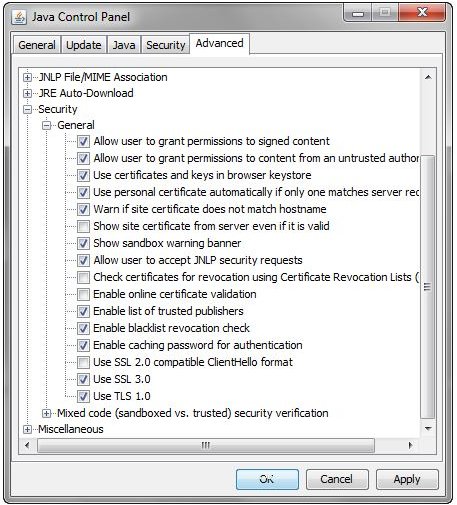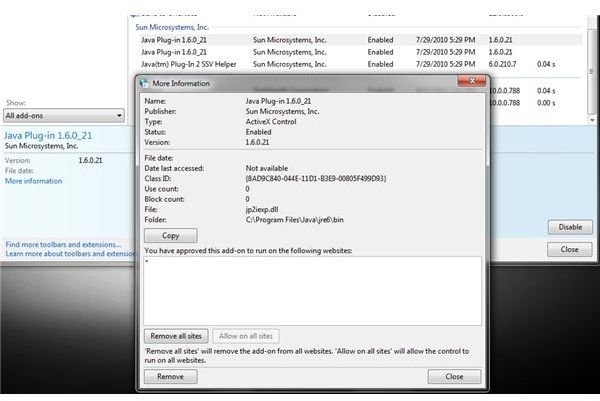Java for Windows 7 Installation and Configuration
Java Runtime Environment for Windows 7
Oracle Java SE Runtime Environment 6 (JRE) Update 14 and newer builds are Windows 7 support-ready and include support for Internet Explorer 8, Windows Server 2008 SP2, and Windows Vista SP2. Any computer running x86-based or x64-based of Windows 7, Vista and XP may install JRE.
Java plug-in is required by several online services and some programs to function properly. Find out how to install and configure Java for Windows 7.
Installing Java for Windows 7
You can install java in your computer using any of the 2 methods below:
- Download the online installer
- Download the offline installer
The first method is the process of using a boot-strap installation method. The file is small because it will download the necessary files for the detected operating system and type of file system (32-bit or 64-bit). This prevents a mistake in downloading wrong setup files when downloading Java installer from the vendors’ website.
The second method is for advanced users that is familiar already what file system of Windows they currently use. Note that a third-party add-on may be offered when you try to install, download or update Java and it depends on your location. Example: A friend of mine who is in the U.S. has seen a third-party add-on when downloading or installing java but here in Asia, I don’t see the third-party add-on bundled in java installer or before downloading. The add-ons are not required to install or use Java for Windows 7. Simply uncheck the box to only get Java RE.
Any method you choose to download the installer will let you install java using the same install process. There is no customization to install Java except when you want to change the install directory. Mozilla-based and Internet Explorer browsers will automatically use the plug-in when you visit a website that requires Java plug-ins.
After you’ve installed Java SE Runtime Environment in Windows 7, you will find the following items added in your system:
-
Java Plug-in for Internet Explorer using the filename, jp2iexp.dll
-
Java(tm) Plug-In 2 SSV Helper using jp2ssv.dll as filename
-
For Firefox users, you will see Java Console is added as Firefox extension
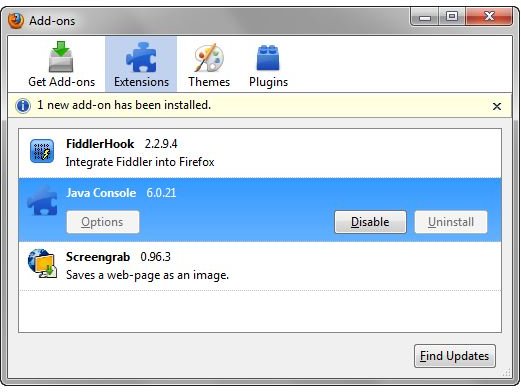
-
Windows 7’s startup item will have Java(tm) Platform SE Auto Updater 2.0 using jusched.exe as filename and you will see it as one of the running processes in Windows.
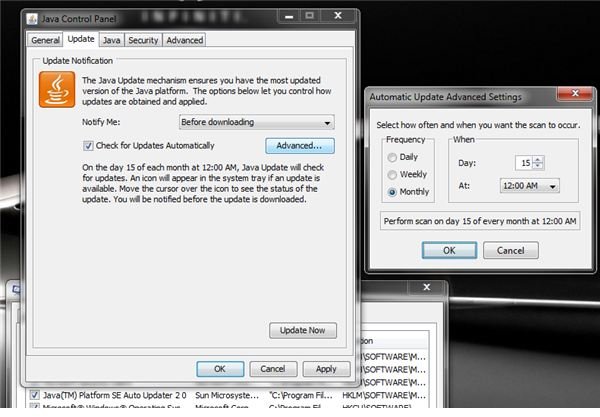
The 32-bit and 64-bit of Internet Explorer is installed by default in Windows 7 x86 and x64. To have java plug-in for both 32-bit and 64-bit IE, you need to download both 32-bit and 64-bit Java respectively.
You can verify the installation of Java for Windows 7 here.
Configuring Java in Windows 7
You can configure Java by opening the Java Control Panel in Windows:
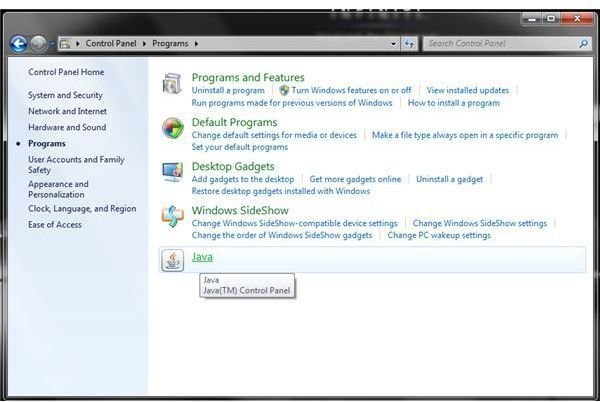
You also can bring up the control panel by running javacpl.exe in the program’s directory. The only issue when using the control panel of Java is some settings will not apply, even if you installed it with administrative permission. An example is when you change the update settings for Java by disabling the automatic check for updates, the startup item is not removed. To work-around this issue, manually delete jusched.exe using registry editor in Windows or by using the startup manager in WinPatrol or CCleaner.
If you want to control which sites will use or download JavaScript, you have to change the settings in the browser’s security options. Firefox users can take advantage of NoScript to control which website can run java scripts or java applets.
Available Options in Using Java for Windows 7
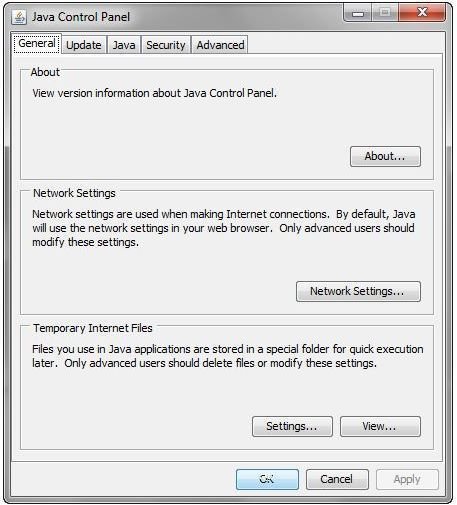
In the above image, you can control whether Java should store temporary files for quick execution because the cache is stored in the users’ directory. If you’re behind a proxy, you may change the settings or use the browsers’ internet connection settings.
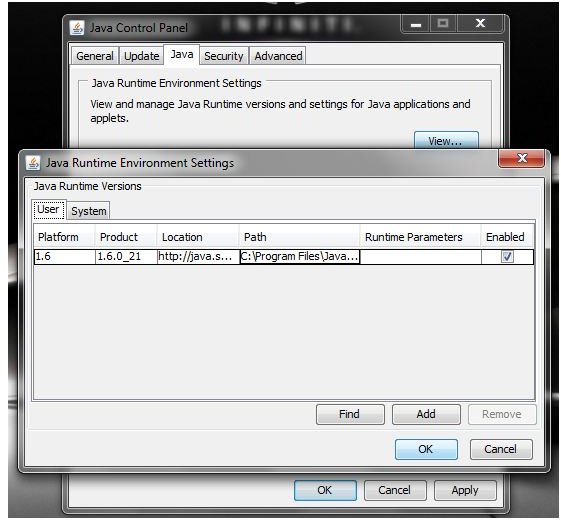
If you have more than 1 version of Java plug-in or any applications in your computer requires a particular version of Java, you may use the above control panel to add and enable a version of Java, to be used by user or the system.
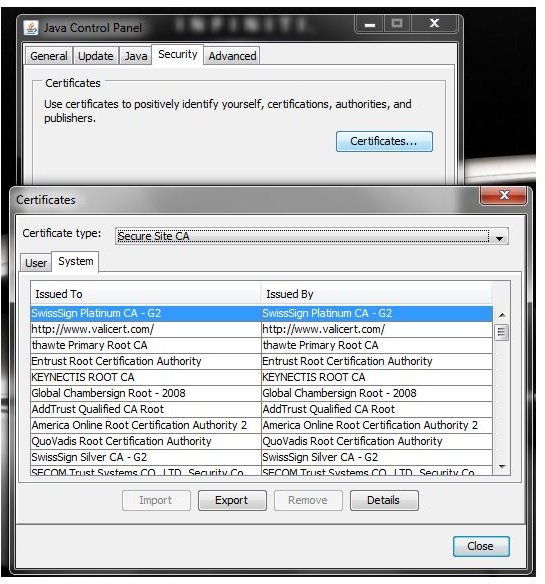
Some secure websites including banks will use Java to help protect their customers when using online banking services.
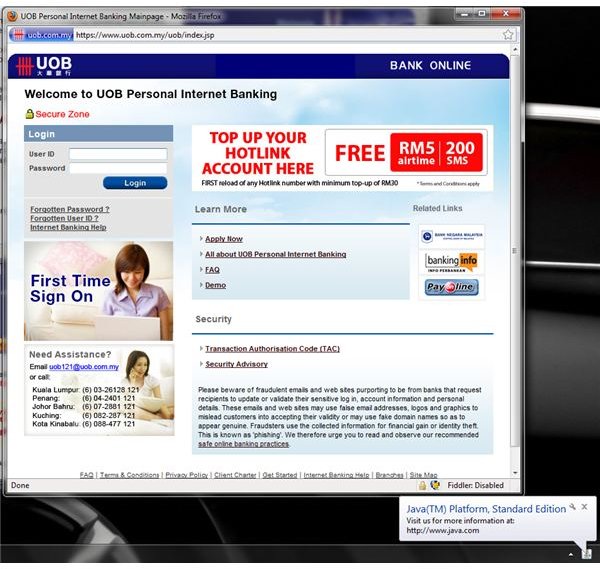
They use Java login applet with embedded bank’s public key to encrypt the password and PIN before it is transmitted to the bank for verification. You can use java control panel to which certificates to use when you need it online. You can also configure how Java plug-in will work. See the images below to find out more about the advanced settings in using Java.
Advanced Settings of Java for Windows 7
